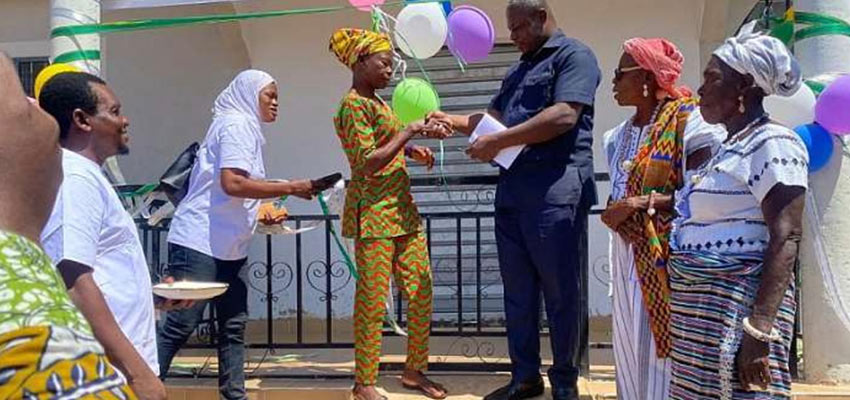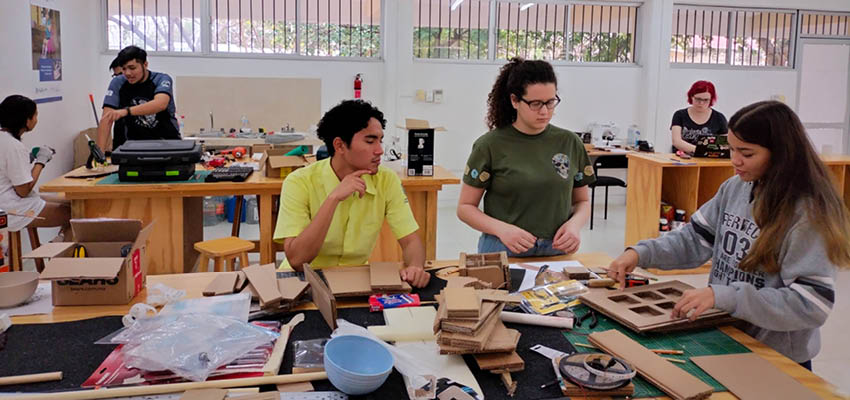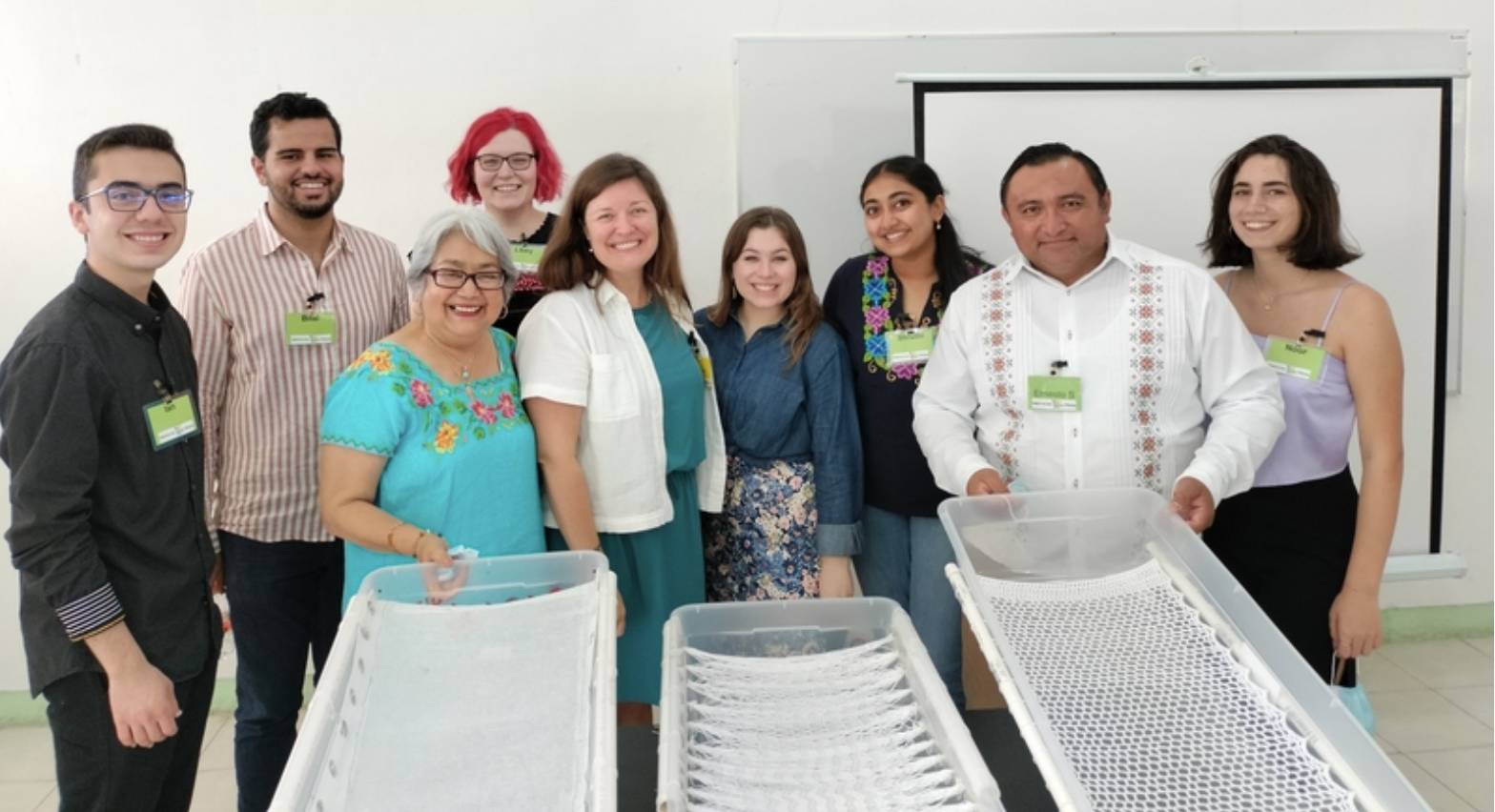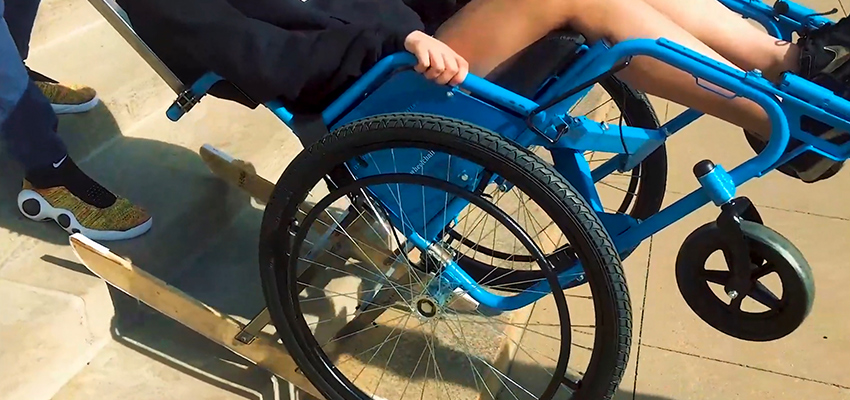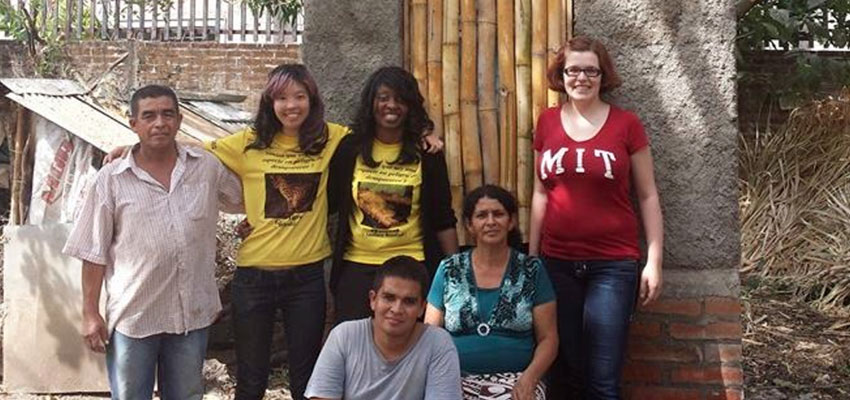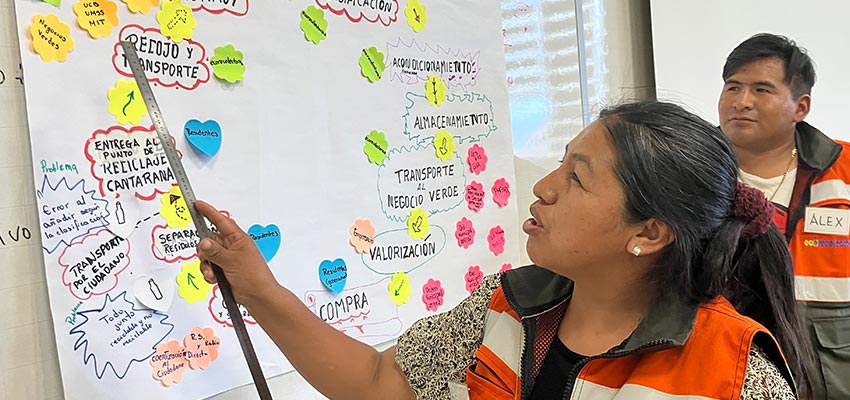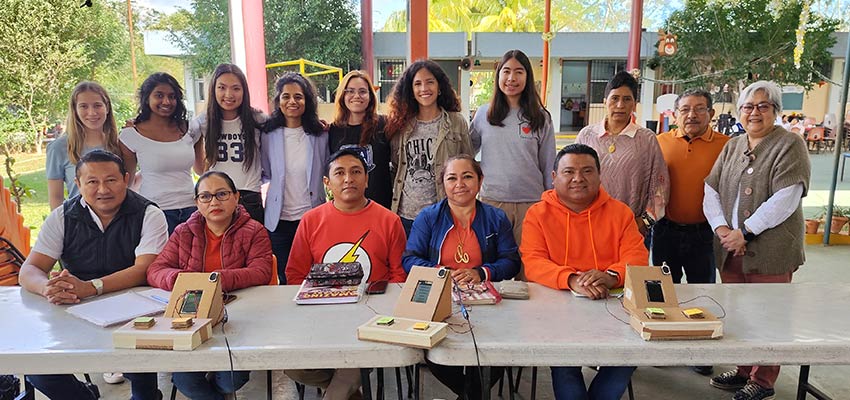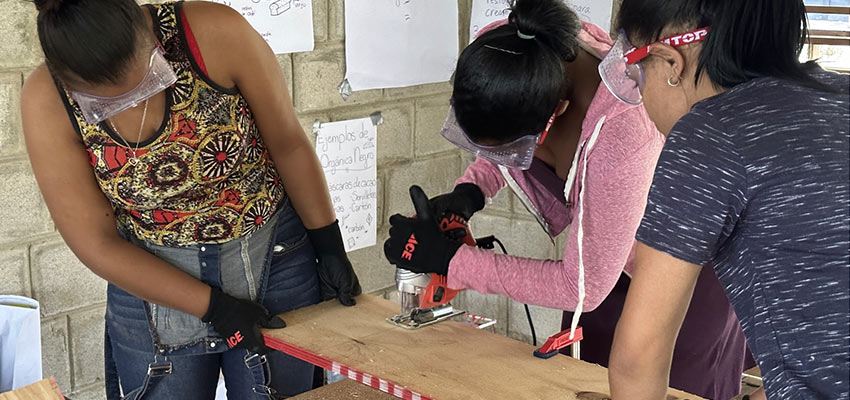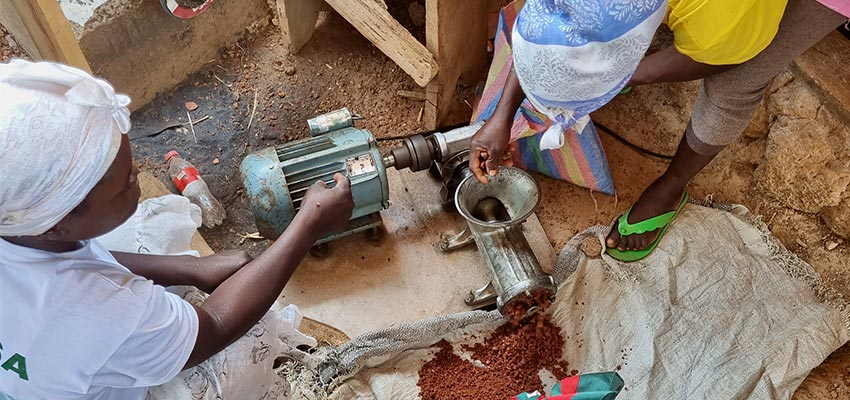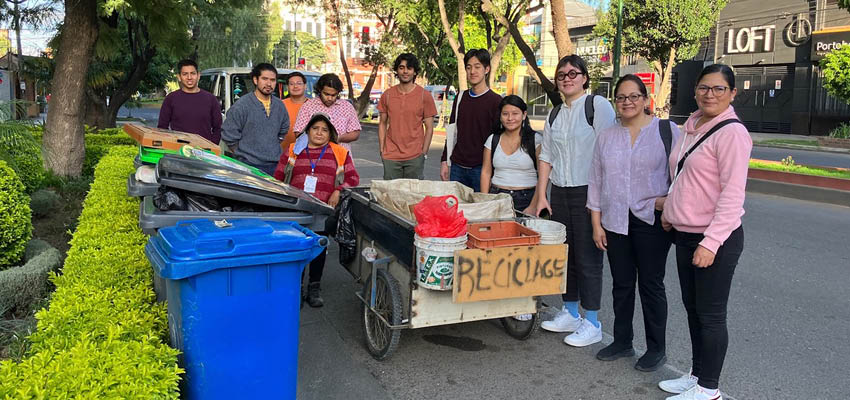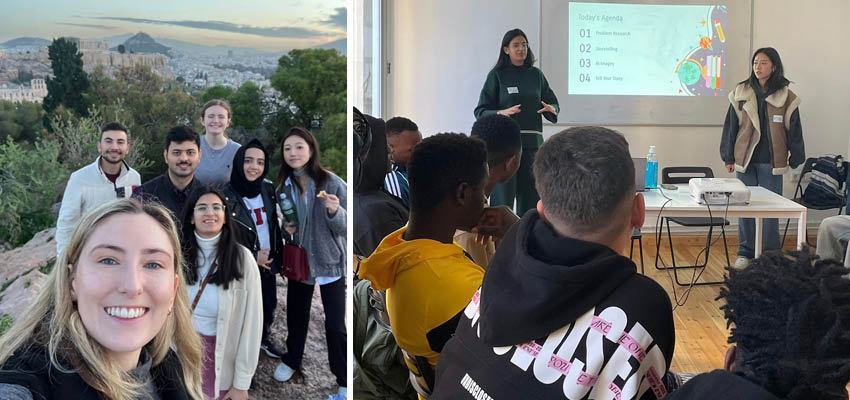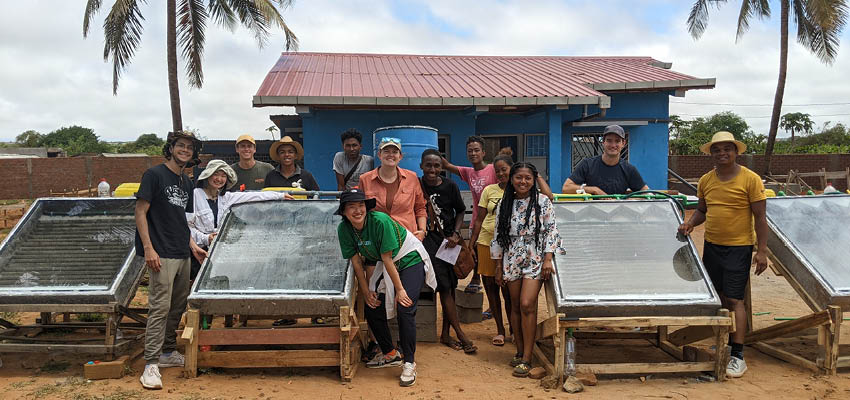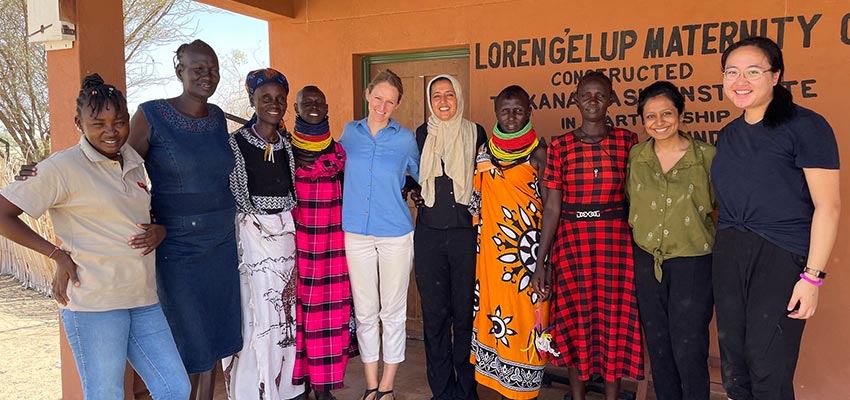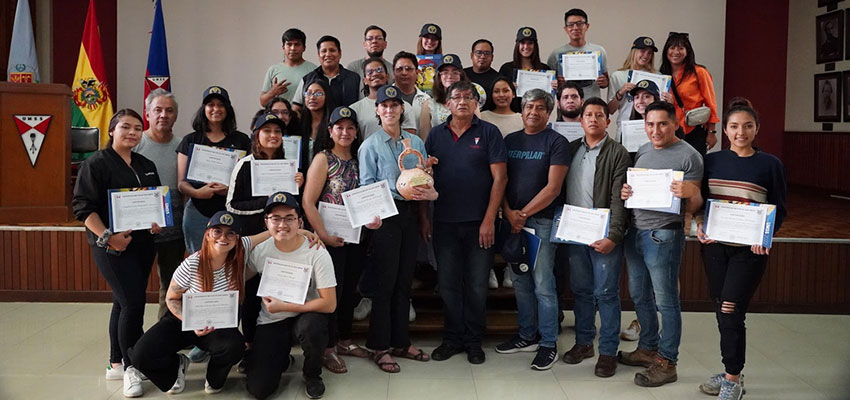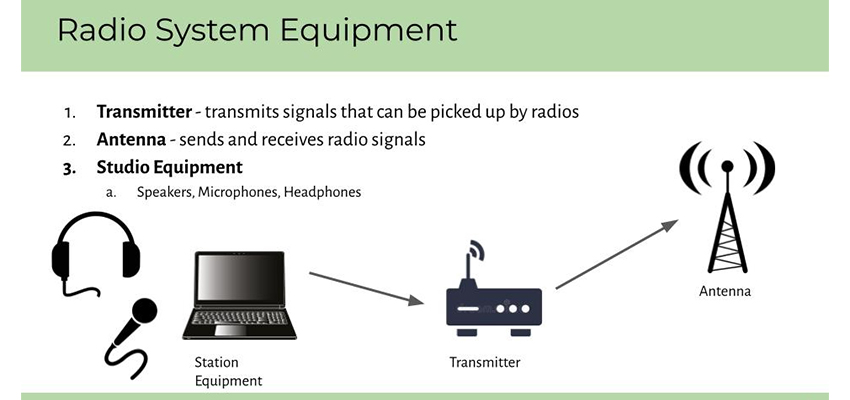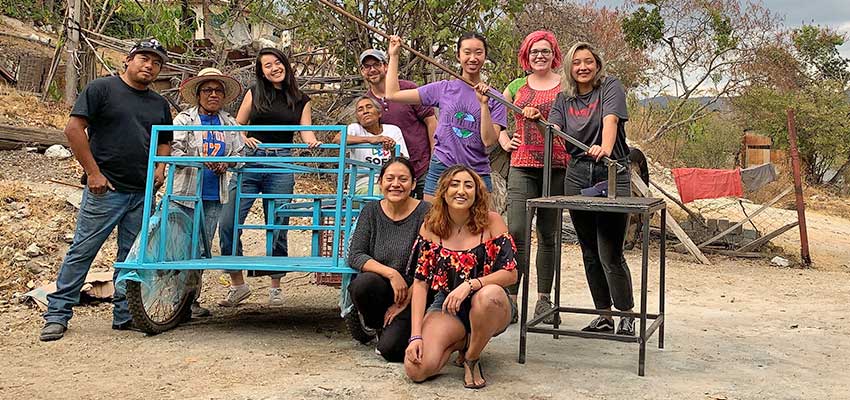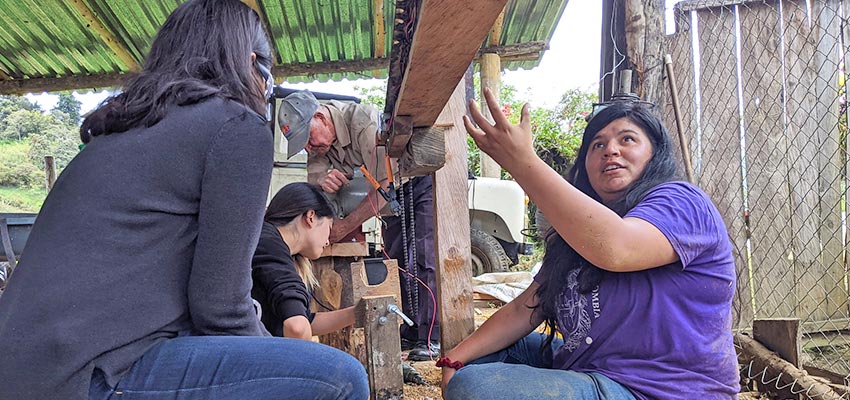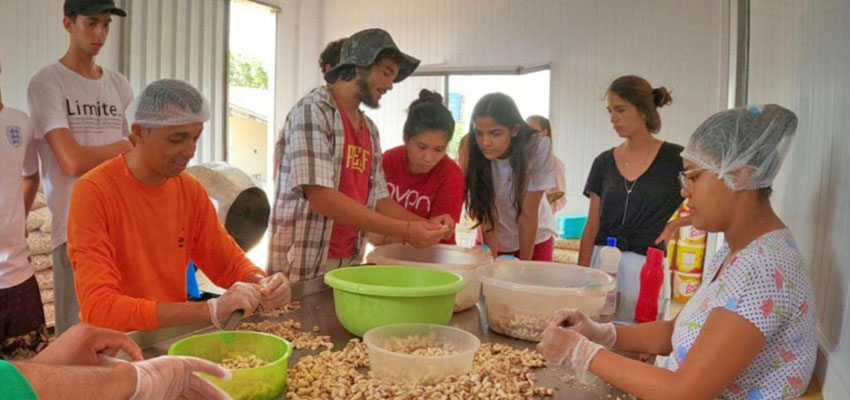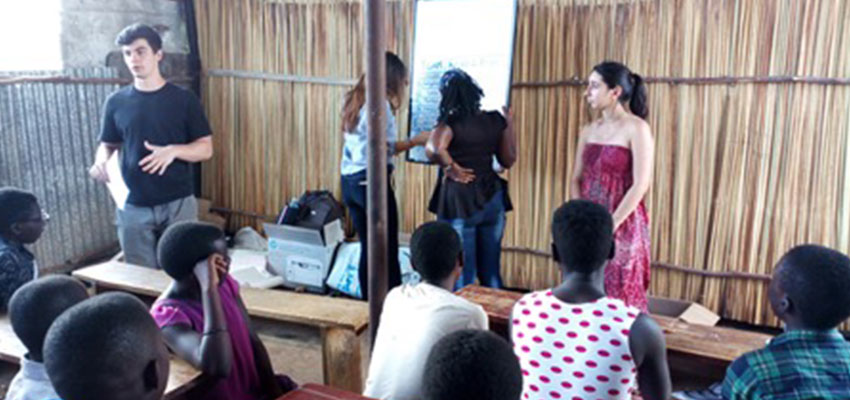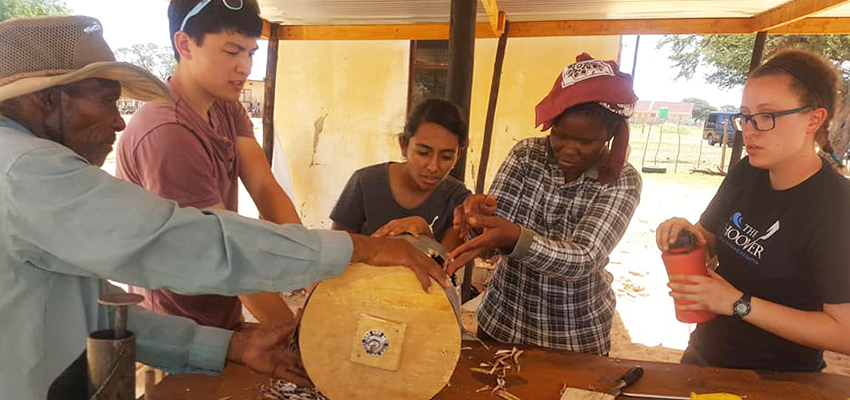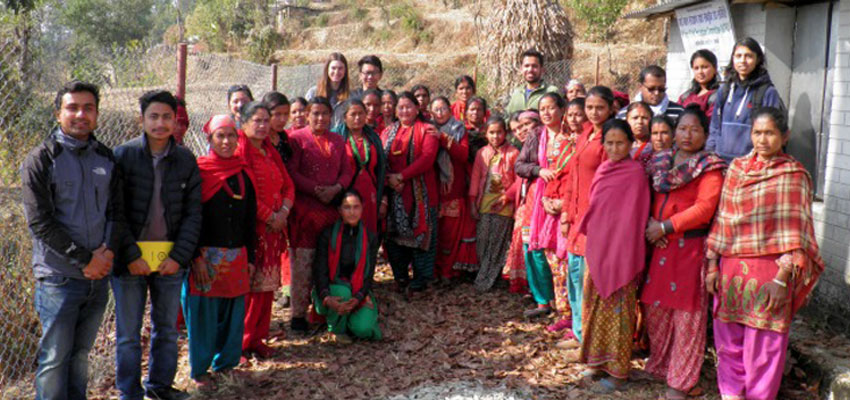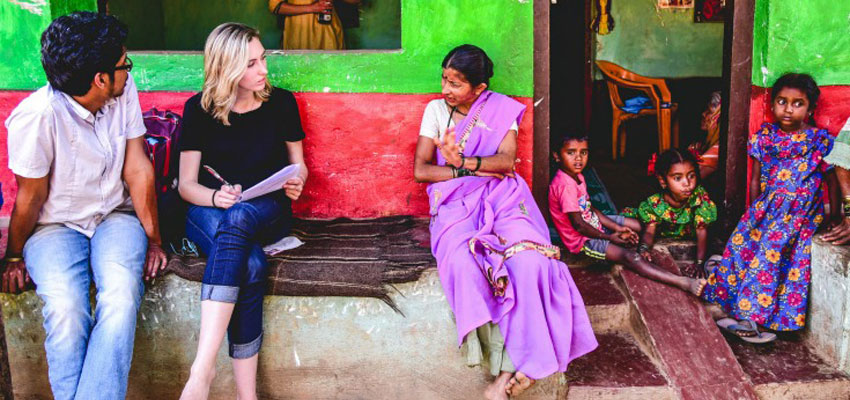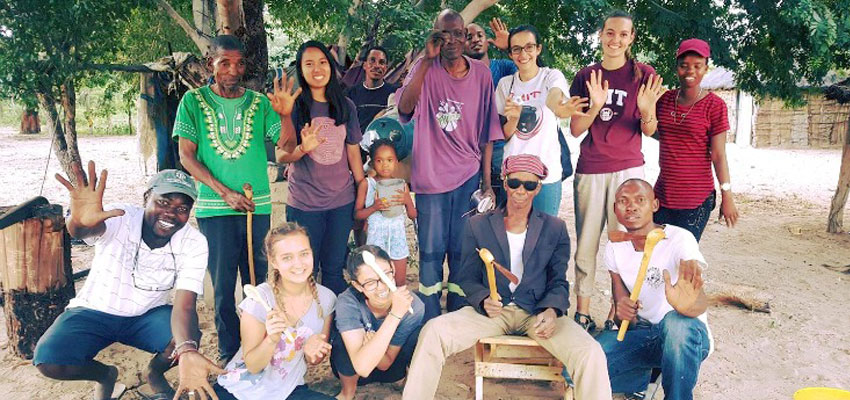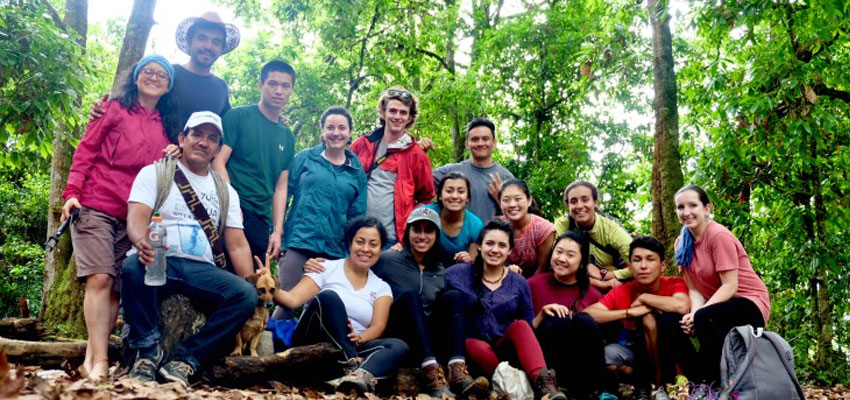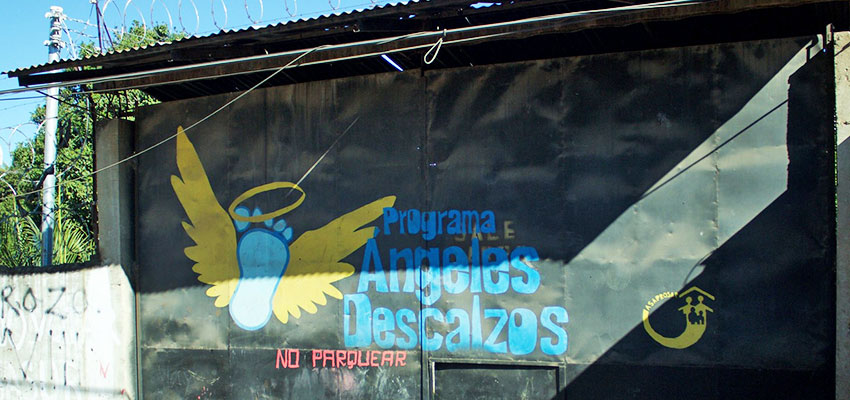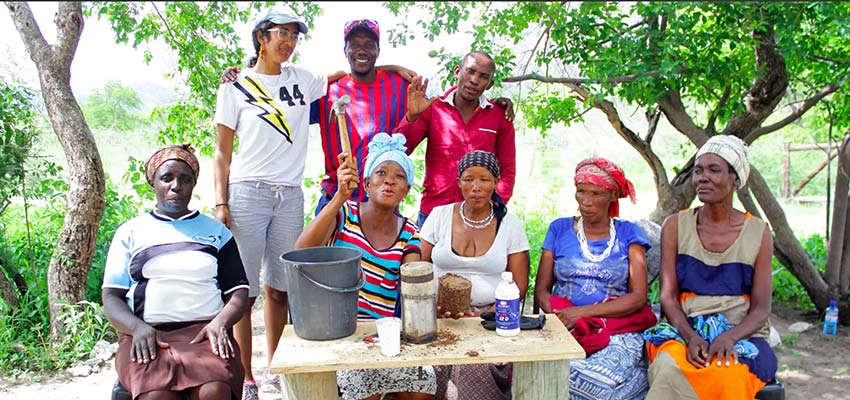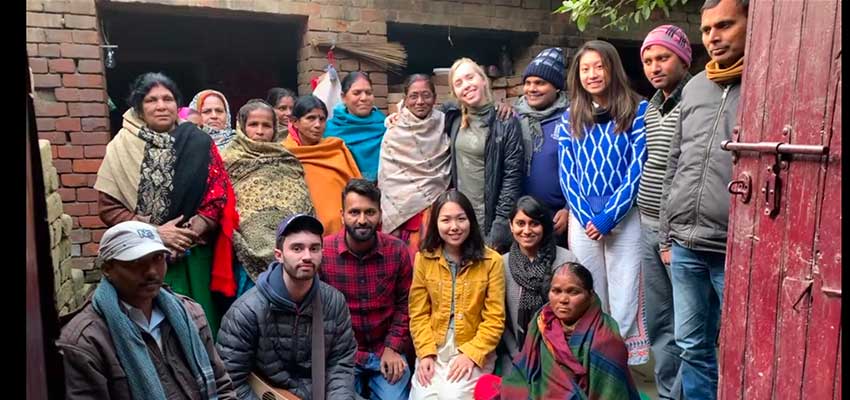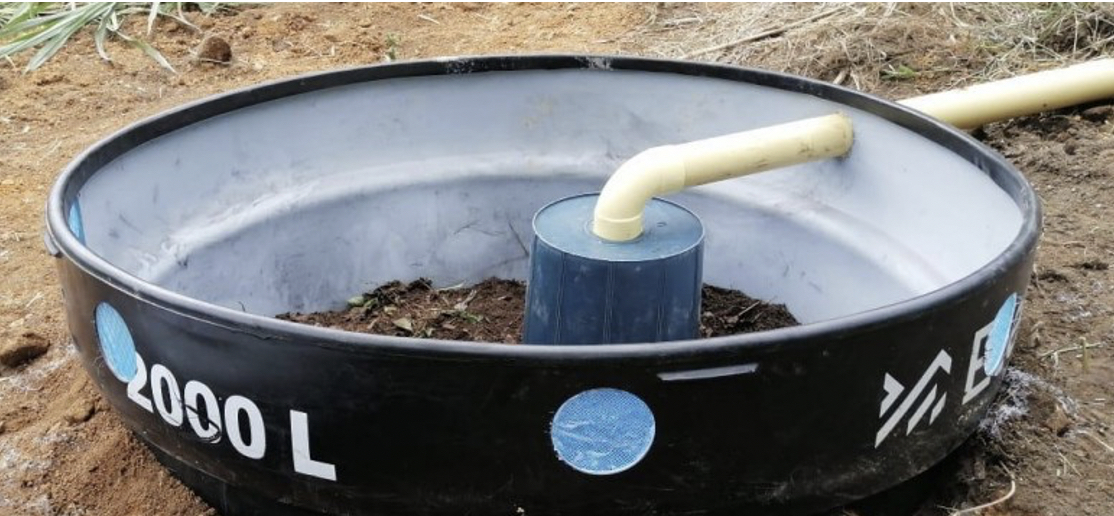
Creating a mechanical solution to improve the solid and liquid waste distribution in vermifilter toilet tanks with Ecoconcientizate, in Colombia.
MIT D-Lab Class
D-Lab: Development Fall 2022
Student team
- Alekhya Bhat, Wellesley College ‘24: I am a junior studying Political Science with a concentration in International Relations. I am from Bangalore, India.
- Amena Khatun, MIT Department of Materials Science and Engineering ‘23: I am a senior studying Materials Science and Engineering with a minor in Biomedical Engineering. I’m from the Bronx, New York.
- Melissa Liu, Harvard College ‘23: I am a second-semester junior pursuing a double concentration in Economics and Government with a particular interest in public policy and international relations. I am originally from Cambridge, Massachusetts.
- Connie Ly, MIT Department of Mechanical Engineering ‘24: I am a junior studying Mechanical Engineering with concentrations in Global Development and Urban Planning at MIT, originally from Miami, Florida.
- Emily Ni, Harvard College ‘23.5: I’m a second-semester junior concentrating in Economics with a secondary in Government, originally from Raleigh, North Carolina.
- Hailey Quinn, MIT School of Architecture ‘24: I’m a junior at MIT majoring in architecture with a minor in Environment & Sustainability, originally from Montville, New Jersey.
Community partners
- Natalia Barrera Gutierrez, Diversa
- Diana Gamba, Diversa
- Eliana Robayo, Ecoconcientizate
Location
We are working in a community in Colombia, more specifically, Agua Bonita, located in the municipality of Silvania within the province of Sumapaz under the department of Cundinamarca.
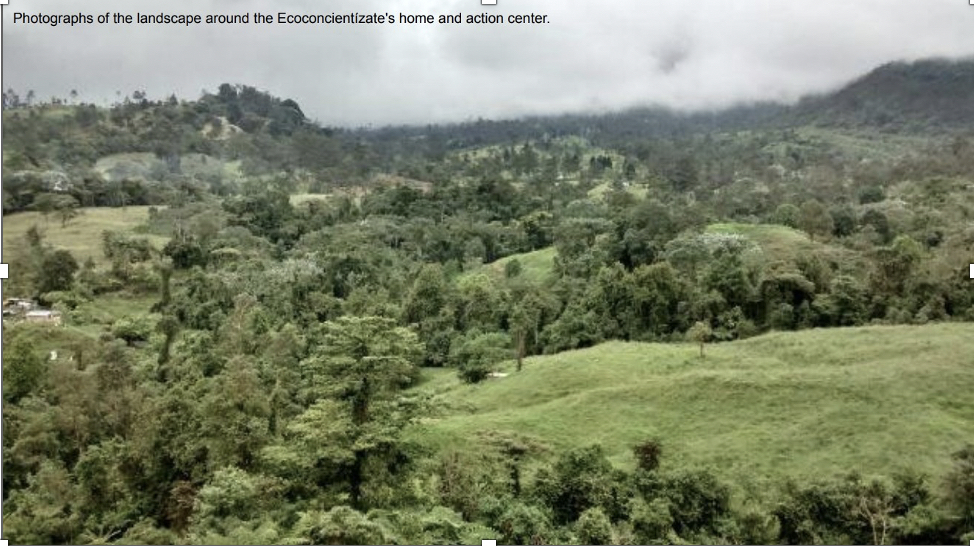
Project description
Our project aims to improve the waste distribution in the Vermifilter system, a low-cost aerobic wastewater treatment. The construction of the vermifilter system is completed by a third-party source, but it does not come without flaws. Our team has been tasked with designing a solution to the current issue of waste distribution within the top layer of the vermifilter tank; as waste is dropped into the tank, it is done so through a single central tube. The lack of area coverage of this tube then leads to a pile-up of waste at the single exit point of the tube. The lack of distribution causes worms to flock to this single pile, forcing them to crowd together without utilizing the space in the rest of the tank. The implications of this problem are many: the dense environment prevents the worms from reproducing at a healthy rate, they are not living comfortably, and the piling causes waterlogging, which eventually drowns the worms. Further, there currently does not exist a simple and replicable blueprint for the vermifilter and its systems. The knowledge required for vermifilter installation and maintenance is incredibly inaccessible, posing an issue as this technology is intended for more widespread use in rural communities. We aim to also supplement a clear and concise manual for our ultimate prototype designs.

Due to poor access to WASH facilities, 2% of the national GDP of Colombia goes toward health-related costs. In 2016, there were 366 deaths due to poor sanitation and water conditions in Colombia. In 2012, there were 119 deaths of children under five years old due to inadequate access to water and sanitation. In rural areas, 3 in 10 people do not have access to safe toileting facilities, which results in higher rates of unsafe disposal practices for excreta. Human waste, which takes about a year to biodegrade, can be a very dangerous environmental hazard if not controlled appropriately. Organizations are in the process of attempting to aid communities by installing waterless eco-toilets. These eco-toilets aim to decrease the pollution of natural waterways and increase the population’s health and well-being. The vermifilter is one of these ideas.
A vermifilter is an environmental and financial investment, costing around 1.5 million Colombian Pesos. We want the filter to be more effective, creating an economical, high-quality, and readily maintained process for distributing waste on the top layer. So more rural Colombian homes will likely embrace the technology, providing a secure and reliable means of waste management. We started our project by conducting a stakeholder analysis, which allowed us to identify individuals and groups possibly impacted by our work, such as vermifliter owners, local community members, worm farmers, pipe suppliers, and ourselves. Once we identified the stakeholders, we started brainstorming and had five different ideas, from sprinkler and mesh systems to mechanical cranks. But we settled on prototyping two of our proposed solutions based on design constraints: low cost, distribution of waste to the entire area, no blockages, easy to build and maintain, and aeration without attracting rodents.

Our first proposed solution is a mechanical crank that can be operated outside of the vermifilter tank. As the crank turns, a shaft inside of the tank will also rotate. Rods or blunt blades attached at the end of the shaft will spin, mixing the solid and liquid waste. Rotating at low speeds and operating at a shallow level, the blades will not harm the worms inside the vermifilter. This will allow for easier vermifilter maintenance without needing to open up the tank and use a rake to manually move the waste, worms, and dirt around. The second concept uses steel angle frames and steel sheets of various heights; they are welded together into a pyramid shape and will help direct the waste to different regions of the top layer. We hope to blend these low-cost solutions to ameliorate distribution and improve the user experience.
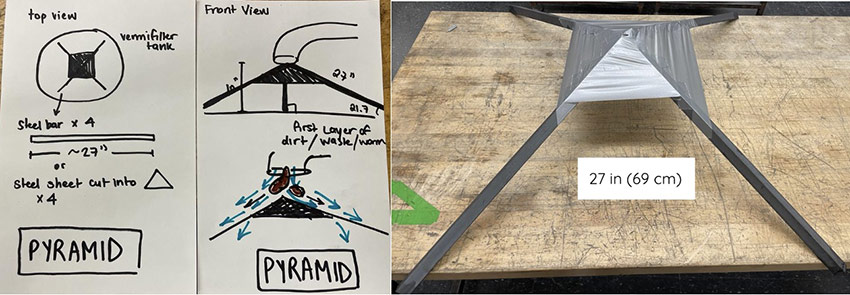
To begin the prototyping process at D-Lab, we modeled the first layer of the vermifilter, the region where the worms, dirt, and waste are. We developed a mixture of chunky peanut butter, powdered sugar, cocoa powder, and cream to simulate solid waste to better understand the solid and liquid flows through our system and their distribution across our vermifilter model area. We built our prototypes and tested how they improved the distribution of waste. During these processes, we were mindful of the cost, maintenance of our proposed technologies, and availability of the materials in the community. Our team will look to combine the solutions if the joint effort substantially improves the spread of waste and user experience.
Next steps
The next steps for this project involve making the vermifilter system more accessible through clear plans, construction information, and affordable materials. We hope to help spread the vermifilter system to parts of rural Colombia–and beyond–where there is a lack of waste treatment infrastructure. This January, we will be traveling to Agua Bonita to work on implementing our design solution and creating informational materials and plans for the construction of the vermifilter system.
Contact
Libby Hsu, Lecturer; MIT D-Lab Associate Director of Academics


